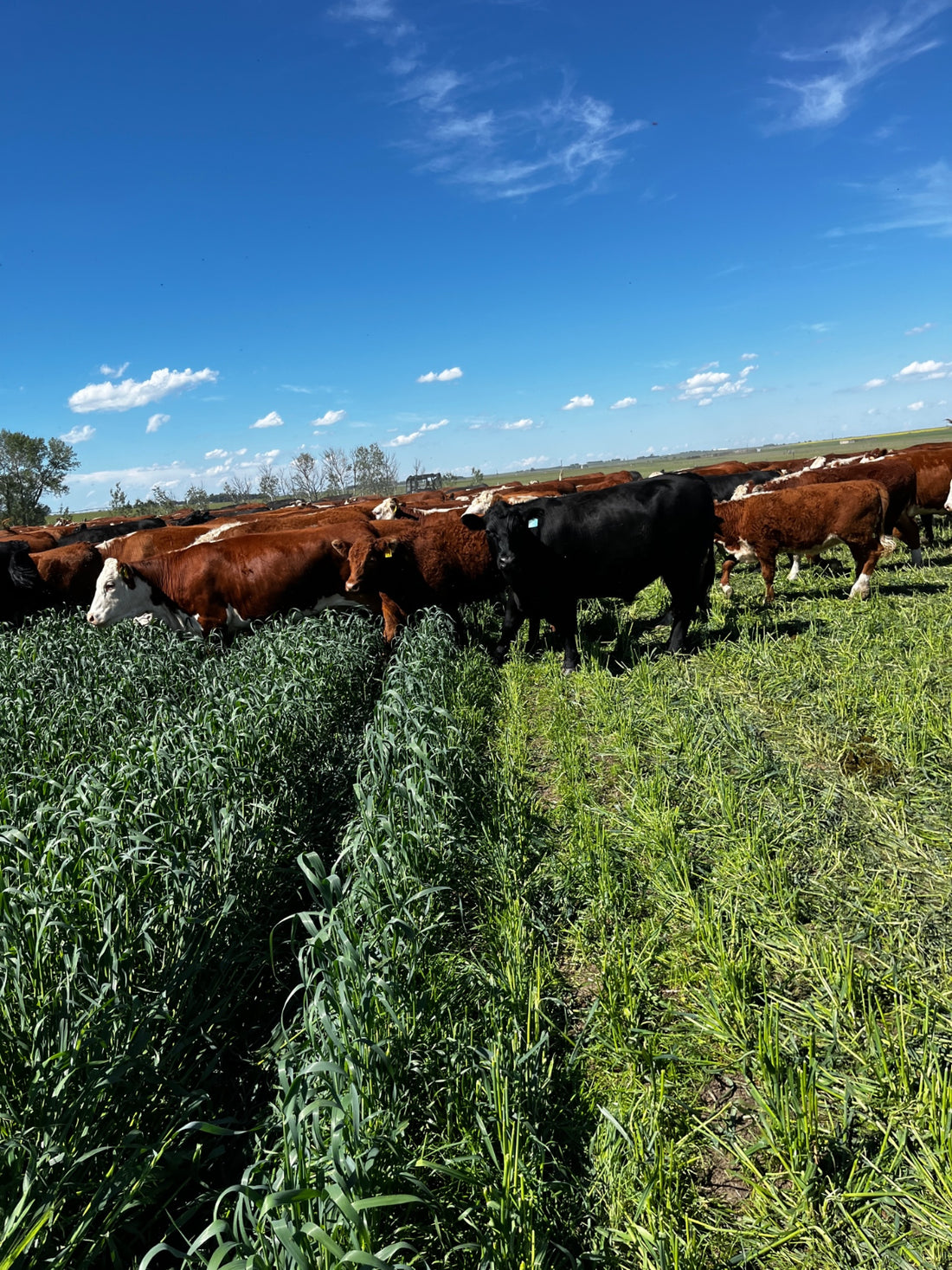Regenerative Ranching with Rotational Grazing: Nurturing Nutrient-Dense Beef
Grazing season has arrived, and our cattle are glad for the opportunity to enjoy fresh grass once again. At our farm, we use an innovative and regenerative grazing technique called adaptive rotational grazing. By using this approach, we partition our pastures into smaller areas called paddocks, utilizing a wire with a light electric current. The cattle are introduced to a new paddock each day, allowing for intense animal impact on a concentrated grass area for only a short period of time. In this blog, we will explore the significance of rotational grazing, its positive impact on soil health and nutrient density, and why it matters for regenerative farming.

What is Rotational Grazing?
Rotational grazing is a management practice that involves dividing pastures into smaller sections, known as paddocks, and rotating livestock between them in a controlled manner. This technique mimics natural disturbances like storms or forest fires, stimulating plant growth and promoting healthy ecosystems. Adaptive rotational grazing allows the cattle to graze only the top half to two-thirds of the plants, ensuring they consume the most nutrient-dense portions containing energy and essential nutrients. And that the partially grazed plants will grow rapidly once the cattle have moved on.

Benefits of Rotational Grazing
- Carbon Sequestration: the regenerative nature of rotational grazing facilitates the decomposition of trampled grass, adding organic matter to the soil. The plants that are grazed are left with enough leaves for continued photosynthesis and root growth. As photosynthesis continues, plants utilize atmospheric carbon to produce sugars, and a portion of this carbon is channeled into the soil and becomes a food source for soil microorganisms. Scientific studies confirm that effective grazing practices have the potential to sequester a substantial amount of carbon in the soil, equal to or even exceeding the emissions produced by the cattle throughout their lifetime. This is why we believe that it is critical to incorporate cattle into the carbon cycle.
- Nutrient Cycling: The remnants of manure and urine left behind in the previously grazed paddocks serve as natural fertilizer for the grass. Dung beetles play a crucial role in this process, scurrying around the cow patties and burying the manure into the soil for decomposition. The resulting breakdown releases nutrients enriching the soil and supporting the growth of healthy plants.
- High Quality Beef: Rotational grazing also improves the health and performance of our cattle. Fresh clean paddocks grazed higher prevent illness from occurring because most parasites dwell near the soil surface. Providing nutrient dense grass every day also ensures healthy weight gain and the production of cover fat and marbling which is important for high quality beef.
Rotational grazing is an art and a science, and we continue to learn more each year about how to improve our management so we can produce the best beef we can. What we know for sure is that it's good to be grazing again!

Visit our online shop today to experience the exceptional quality and flavour of our grass fed, grass finished beef.

